Chair's Message
 In some way, we are all owners of British Columbia, whether as government, citizens, First Nations, communities, businesses, or licensees. As an owner or a steward, you take care of your assets; you maintain them; you conserve them, you protect them; you grow them; you insure them, you measure them, you utilize them; you enjoy them. Over the coming year, the Board will spend time describing our vision of good stewardship, and how BC’s forest and range practices contribute to stewardship.
In some way, we are all owners of British Columbia, whether as government, citizens, First Nations, communities, businesses, or licensees. As an owner or a steward, you take care of your assets; you maintain them; you conserve them, you protect them; you grow them; you insure them, you measure them, you utilize them; you enjoy them. Over the coming year, the Board will spend time describing our vision of good stewardship, and how BC’s forest and range practices contribute to stewardship.
Professional reliance is a key component of stewardship and it is pervasive in federal, municipal and provincial legislation such as the Forest and Range Practices Act (FRPA). It has come to the forefront in the Board’s bridge construction report and the Skidegate Narrows visual quality complaint report, and may play a part in government’s Mt. Polley mine disaster report. These examples point to the need for a review of all parties’ roles and responsibilities in supporting professional reliance, including effectiveness and monitoring.
The Tsilhqot’in Supreme Court decision is very significant. It is the result of our failure, as a society, to resolve First Nations issues for over 100 years. It will be interesting to see how the Tsilhqot’in Nation and the Province move to implement reconciliation, for the Supreme Court has said the land and trees belong to the Tsilhqot’in Nation. What is emerging then could be a mosaic or a patchwork of ownerships, overlapped with a multitude of licences, permits, leases, designations and community interests across the province. Water, flora and fauna know no boundaries. Are we going to be content, in the future, to have all these areas managed separately, in an uncoordinated way with little or no continuity, and what will be the role of our monitoring and effectiveness bodies? How this developing mosaic is managed will determine the environmental, social and economic sustainability and certainty in BC.
Please refer to our website for more information, and share your thoughts and concerns with us through Email, Facebook or Twitter; they are always appreciated. If your community or group would like to meet with a Board representative, please give us a call so we can arrange a get together.
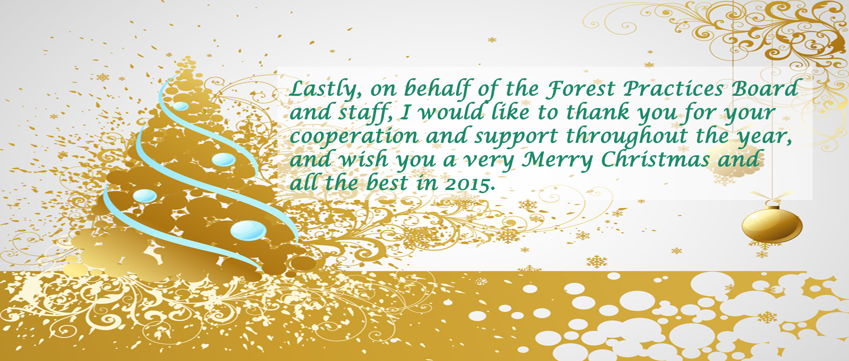
New Website
WWW.BCFPB.CA
WWW.BCFPB.CA
 In September we introduced a new revamped website at a new address. If you haven’t checked it out yet, drop by for a visit. We hope you will find it more visually stimulating, easier to navigate and with more relevant information easily available. Traffic to the site has increased significantly since it was launched in late September. In November, we were very pleased to learn the website has won three awards at two international competitions:
In September we introduced a new revamped website at a new address. If you haven’t checked it out yet, drop by for a visit. We hope you will find it more visually stimulating, easier to navigate and with more relevant information easily available. Traffic to the site has increased significantly since it was launched in late September. In November, we were very pleased to learn the website has won three awards at two international competitions:
– 2014 Marcom Gold Award – Mobile & Web-Based Technology/Mobile Website
– 2014 Marcom Gold Award – Website/Government
– 2014 Davey Silver Award – Websites/Government
20 Years of Public Oversight
On December 21, 1994, the BC government established the Forest Practices Board with the proclamation of Part 8 of the Forest Practices Code of British Columbia Act. On the day of proclamation, Board Chair Keith Moore, and Board members Dr. Gordon Baskerville, Cathy Mumford, Cindy Pearce and Jack Toovey were appointed by Order-in-Council. With just a telephone and a briefcase in hand, Keith Moore’s task of setting up the Forest Practices Board had begun. At the time, government described the Board as “the key to making the Code work. It will be the independent, expert monitor of forest practices in B.C.”
Audit Season Update
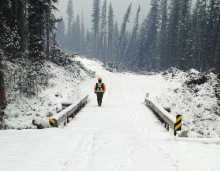 The audit field season for 2014 wrapped up in October. The Board completed 12 audits, including two BC Timber Sales Programs, four woodlots, a community forest, four range tenures, a tree farm licence, several non-renewable forest licences and an audit of heli-ski companies’ compliance with a memorandum of understanding to protect mountain caribou. We have already completed and published seven of those audits, and several more are anticipated in the next month. Our goal is to have all of the audits published by the end of March 2015. For the most part, the audits this year found good compliance with FRPA, with just a few areas of improvement noted. The majority of issues found involved Wildfire Act compliance and we are considering a special report on that topic for 2015.
The audit field season for 2014 wrapped up in October. The Board completed 12 audits, including two BC Timber Sales Programs, four woodlots, a community forest, four range tenures, a tree farm licence, several non-renewable forest licences and an audit of heli-ski companies’ compliance with a memorandum of understanding to protect mountain caribou. We have already completed and published seven of those audits, and several more are anticipated in the next month. Our goal is to have all of the audits published by the end of March 2015. For the most part, the audits this year found good compliance with FRPA, with just a few areas of improvement noted. The majority of issues found involved Wildfire Act compliance and we are considering a special report on that topic for 2015.
Reaction to Published Reports
Haida Gwaii Visuals
Haida Gwaii Visuals
 This complaint report found issues with professional assessments of visual quality, issues with government’s inability to decline cutting permits even where problems meeting the established VQOs were anticipated, and a lack of appropriate government enforcement afterwards. The report was well-received by the Haida Nation and the Board is hopeful this case will lead to improvements in managing visual quality in the future and contribute to improvements in professional reliance under FRPA.
This complaint report found issues with professional assessments of visual quality, issues with government’s inability to decline cutting permits even where problems meeting the established VQOs were anticipated, and a lack of appropriate government enforcement afterwards. The report was well-received by the Haida Nation and the Board is hopeful this case will lead to improvements in managing visual quality in the future and contribute to improvements in professional reliance under FRPA.
In an email from a member of the Solutions Table, the joint Haida-BC government operational decision-making body for resource use on Haida Gwaii:
“I am quite impressed with the outcome of this process through the Forest Practices Board,” and “I commend you for your fine work, it is not always easy to draw a line in the sand and stand there all alone no matter what.”
Reported in the Haida Gwaii Observer (Nov 14, 2014)
Trevor Russ, vice-president of the Haida Nation, said he was pleased with the finding. “I think from the Council of the Haida Nation perspective, we’re happy that the Forest Practices Board stepped up,” he said, noting that the CHN has heard additional concerns from citizens about the visual impacts of logging.
Bridge Design and Construction
The ABCFP and APEGBC responded to the Board’s recommendations on bridges at the end of October. They outlined a number of steps the associations have taken to ensure their members are practicing appropriately when it comes to designing and constructing bridges on forest roads. Since the Board report was published, the Joint Practices Board of the two associations revised and released to their members the APEGBC/ABCFP’s Guidelines for Professional Service in the Forest Sector-Crossings (2014). The ABCFP also held a vote on a proposed by-law that would connect professional practice with use of the guidelines. The by-law passed handily, showing that professional foresters believe in and support the importance of ensuring bridges are well-built and safe for use. The association is also pursuing several investigations of members responsible for some of the unsafe bridges, demonstrating that its members are being held accountable for the quality of their professional practice. To see the detailed response to the Board, go here .
Community Watersheds
In our April 2014 report on community watersheds, the Board made a number of recommendations to government to improve how drinking water is protected from forest practices. We recommended government review the current legislation (FRPA), provide clear direction to licensees to help them improve forest stewardship plans and how they propose to protect water, expand monitoring to better assess how well water is being protected from impacts of forest practices, and finally, that government review the status of community watersheds to ensure the appropriate areas receive the appropriate protection.
Government has now responded to the recommendations and has committed to follow them. The Ministry of Forests, Lands and Natural Resource Operations (FLNR) is going to conduct a comprehensive review of water quality provisions under FRPA over the next year. The Ministry will provide guidance to forest and range practitioners on preparing forest stewardship plans and the FREP program will improve its water quality sampling procedures to include sites both inside and outside of community watersheds. Finally, the Ministry is going to review its management of community watersheds as a first step in updating the status of these important areas of public land.
The Board also recommended the two professional associations governing foresters and engineers ensure their members are conducting quality hydrological assessments for forest planning. The ABCFP and APEGBC have also responded to the recommendation, and are working on developing joint guidance for their respective members. In addition, the associations have discussed the report with government and both parties have committed to work together in meeting the Board’s recommendations. The responses have been posted on the Board’s website with the original report.
The Board recognizes it will take government time to complete this work and so the Board will monitor progress of implementation and has asked both parties to provide an update in 2015.
Salt Lake City - IUFRO World Congress
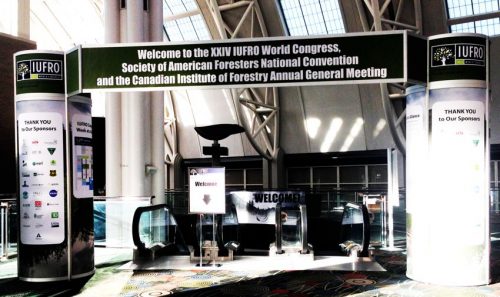
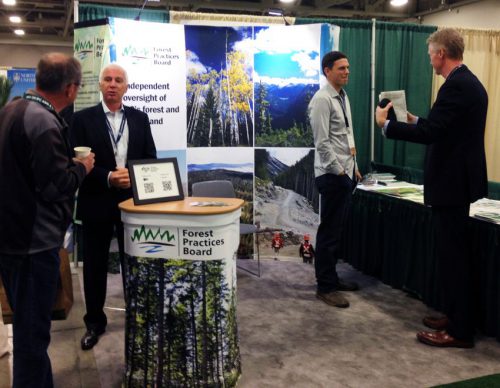
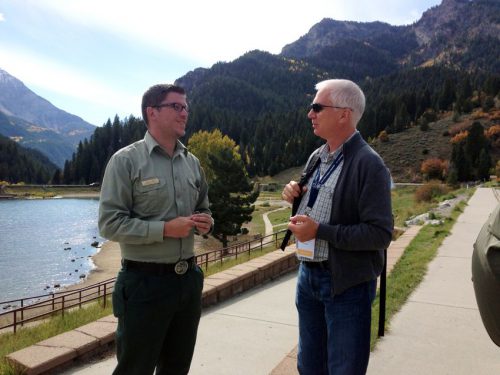
The Board participated in the IUFRO XXIV World Congress in Salt Lake City, Utah from October 5-12 this year. Over 4000 delegates from more than 80 countries around the world attended the congress. It provided an excellent opportunity to showcase BC’s approach to sound forest management and independent oversight.
The Board presented a poster in a session on the Impact of Forest Certification on Sustainable Forest Management, titled “Is Forest Certification Contributing to Sustainable Forest Management in British Columbia?” This poster illustrates the scope of certification in British Columbia and summarizes the results of Board audits relative to certification status. The Board also gave a presentation “Obtaining and Maintaining Social Licence to Operate – BC’s Quality Assurance Model.” Both sessions were well attended.
It was very interesting to see how BC’s approach compares to other parts of the world. We came away from the Congress impressed with how advanced BC is in sustainable forest management and in providing independent oversight to create and maintain social licence.
The Board has been invited to submit the presentation on social licence, along with the other participants in this session, for publication in a special issue of Forestry, the International Journal of Forest Research on social licence in forestry.
We also participated in a field tour that featured the US National Forest Service’s approach to wildland fire management and post-fire restoration along the Wasatch front, where the Uinta-Wasatch-Cache National Forest borders Salt Lake City. There were many similarities to BC’s wildland-urban interface issues and some very interesting approaches taken by the Forest Service and local governments. The tour then highlighted approaches to recreation management. Because of the abundance of recreation opportunities, the Uinta-Wasatch-Cache National Forest is one of the most heavily visited in the entire National Forest System, providing recreational opportunities for a population of over 3 million people.
New Projects in the Works
Forest and Range Evaluation Program (FREP) Review
Forest and Range Evaluation Program (FREP) Review
This special report will review the effectiveness of the FREP program in implementing continuous improvement and adaptive management as the foundation for the FRPA legislative framework. FREP is led by FLNR in partnership with the Ministry of Environment. The Forest and Range Practices Act and Regulations provide for a results-based, forest and range management framework in British Columbia that includes professional reliance as a foundational principal. Under the results-based model, government evaluates the effectiveness of forest and range practices in achieving management objectives, including sustainable resource management, through this program. FREP is a long-term commitment by government to:
- Assess the effectiveness of forest and range legislation in achieving stewardship objectives
- Determine whether forest and range practices are achieving government’s objectives, with a focus on biological function and social values (visual quality and cultural heritage)
- Identify forest and range resource value status and trends, and
- Identify opportunities for continued improvement of British Columbia’s forest and range practices, policies and legislation.
The purpose of this special report is to determine the effectiveness of the FREP program in implementing continuous improvement and adaptive management as a foundation for the FRPA legislative framework. Specifically, this evaluation will:
- Describe the role and intent for the FREP program within the FRPA framework.
- Describe the program design.
- Evaluate FREP implementation (in its design context) to determine if it is meeting, or likely to meet the expected program outcomes and fulfill its role within the FRPA framework.
- If appropriate, provide recommendations to improve FREP design and/or delivery.
Board staff are gathering information on FREP’s design and implementation, including interviews with those responsible for program administration and implementation, those intended to utilize the products of the program, and those who are responsible for resourcing the program. A special report on the effectiveness of the FREP program will be completed by next summer.
Managing Forest Fuels in the WUI
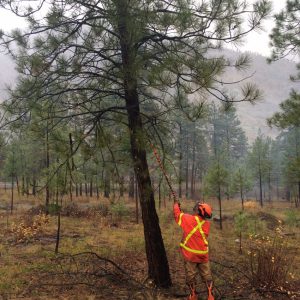 The Board is investigating how much progress communities have made in reducing forest fuels in the wildland-urban interface, following up on a report published in February 2010.
The Board is investigating how much progress communities have made in reducing forest fuels in the wildland-urban interface, following up on a report published in February 2010.
The earlier report examined fuel reduction treatments at 50 sites across the province, and included interviews with local governments, the First Nations Emergency Services Society, the BC Wildfire Management
Branch, and consultants working on fuel treatment projects. It noted that good progress had been made, but much work remained to be done.
This new investigation is revisiting some of those same sites to assess how effective the fuel treatments were. More recent treatment sites are also being examined and interviews with communities, government staff and fire experts are being conducted to assess fuel reduction progress over the last five years and to identify any new issues or barriers to fuel reduction progress.
The board is seeking input from communities as part of the project, as well as interviewing government staff, municipal government representatives and fuel management specialists.
Timber Removal in the Mountain Caribou Habitat
As part of its 2007 recovery implementation plan, to return mountain caribou populations to pre-1995 levels, the BC government issued nine ungulate winter range orders (Orders), over more than two million hectares of Crown land, under the Government Actions Regulation of FRPA. The Orders contain special restrictions for industrial and commercial recreational activities within mountain caribou habitat.
Despite the recognition and protection provided to caribou habitat by the Orders, industrial and commercial users may need to remove timber to facilitate their operations. These activities may include timber harvesting and road clearing, oil and gas and mineral exploration, hydro projects, heli-pad construction for landing and pick-up zones, and glading of ski runs. The Orders dictate when and how timber can be removed for these activities. Timber removal that cannot comply with the Orders requires an exemption under section 92(1) of the Forest Planning and Practices Regulation.
In cooperation with staff of the FLNR, the Board is assessing the level of timber removal within one of the areas covered by the nine Orders, to determine the extent of timber removal and the level of compliance with the Order.
The final report should be released to the public in late Spring 2015.
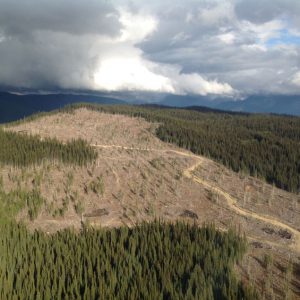
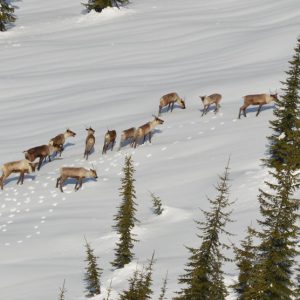
Strategic Plan
At the December Board meeting, the strategic plan for the next few years was finalized. The Board has decided to carry out five special projects in the coming year or two, all focused on promoting stewardship of public forest and range land. Topics covered by the projects will be fish, roads, silviculture, landscape level forest management and range. Terms of reference for specific projects will be developed and made available on our website in the coming months. And of course we will continue to audit a variety for forest tenures and respond to the public concerns and complaints that come in.
Wildfire Act Appeal Hearing
A private citizen was clearing his land in May 2009. Wanting to dispose of a large root wad from a tree he removed, he lit a fire to burn it. Even though it was only May, the fire escaped and quickly spread to nearby grass and brush. By the time provincial firefighting crews were able to put it out, the wildfire had burned 140 hectares. Luckily, mostly grass and brush burned and no buildings were destroyed. There was an investigation of the fire and the forest district manager held a hearing, where Citizen X appeared. A while later, the citizen received a letter from the government ordering him to pay over $850,000—the total costs of fighting the fire. He appealed the order to the Forest Appeals Commission, arguing that the government misinterpreted the Wildfire Act—which allows the minister to order payment of fire-control costs—and that the process in reaching the decision to issue the order was not fair.
The Forest Practices Board participated in the appeal to the Commission as a third party. One of the Board’s fundamental purposes is to encourage fair and equitable application of legislation and it will join appeals if it believes there are issues of broad public interest involved. In this case, the Board was interested in whether or not the minister has discretion in making an order for fire control costs. While the appeal involved a number of issues, it was the discretion in ordering costs that the Board weighed in on.
Fire control costs are calculated based on wages of employees who fight a fire, costs of aircraft, fire retardant and other factors described in the Wildfire Regulation. The Wildfire Act allows the minister, in certain circumstances, to order a person to pay the government’s fire control costs. The Board interprets this to mean that the minister may order someone to pay only part of the costs in some circumstances. For example, if a person does not cause a fire but simply contributes in some way to its spread, or where the government did not exercise appropriate care in fighting the fire. The government, on the other hand, interprets the legislation to mean that the minister can order a person to pay all of the costs, or none of the costs, but nothing in-between.
The Forest Appeals Commission heard the appeal in late November and will issue a written decision once it has decided the matter.
Upcoming Events
Look for the Board booth at the following events in the New Year:
- BC Natural Resource Forum – January 20 – 22, 2015
- Association of BC Forest Professionals AGM – February 18 – 20, 2015
– Board Chair, Tim Ryan will moderate a panel discussion on professional reliance. - Western Silvicultural Contractors’ Association AGM – February 4 – 6, 2015
People
Board Membership Changes
Board Membership Changes
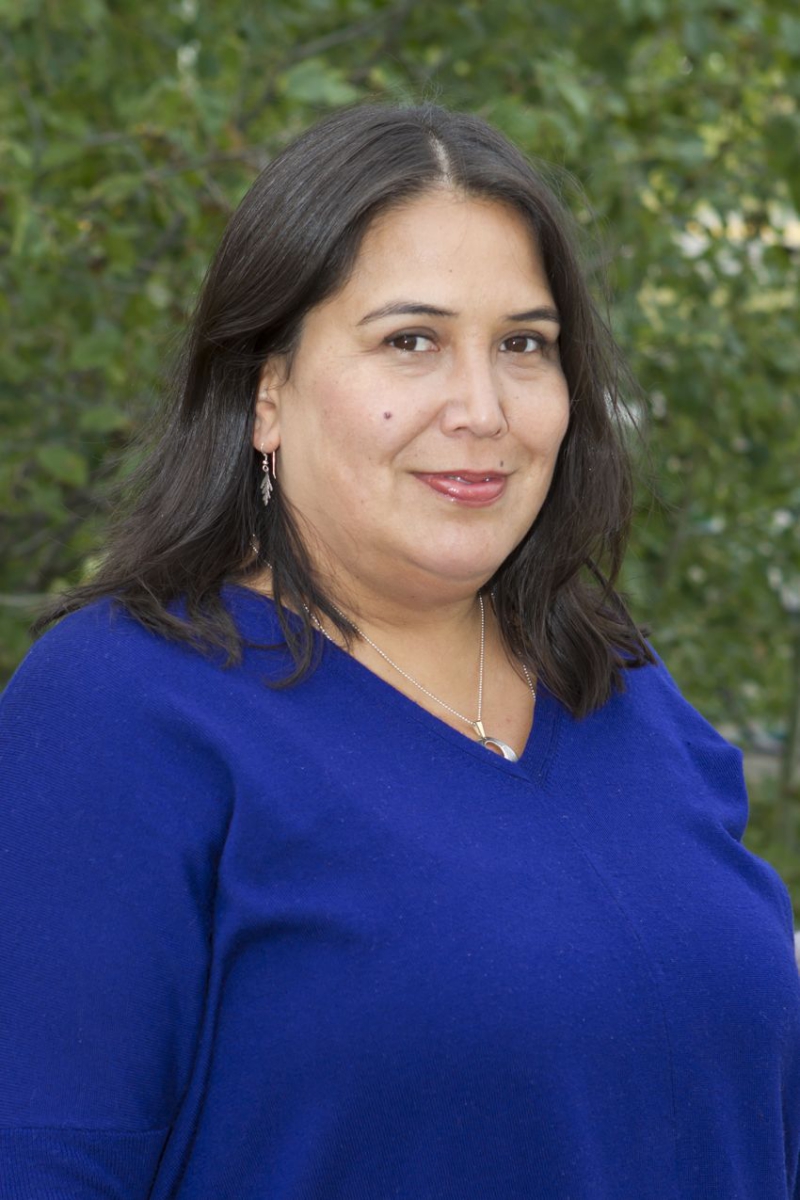
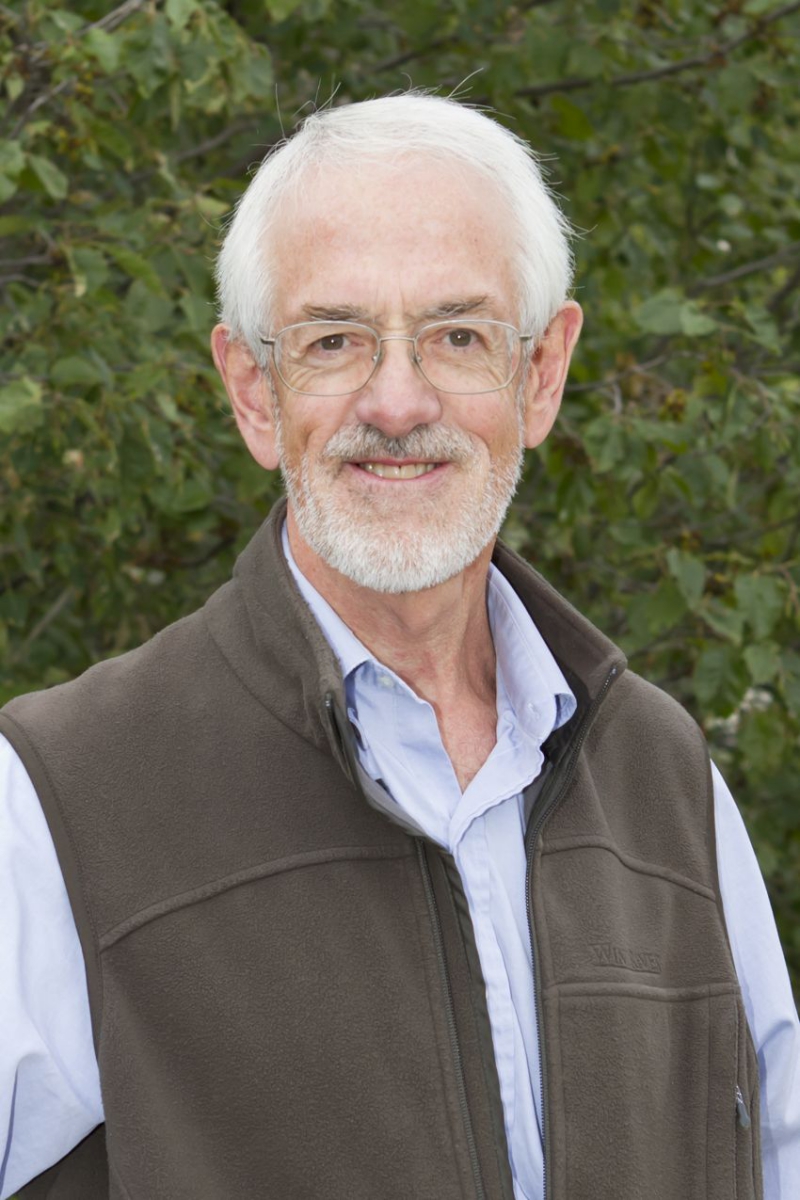
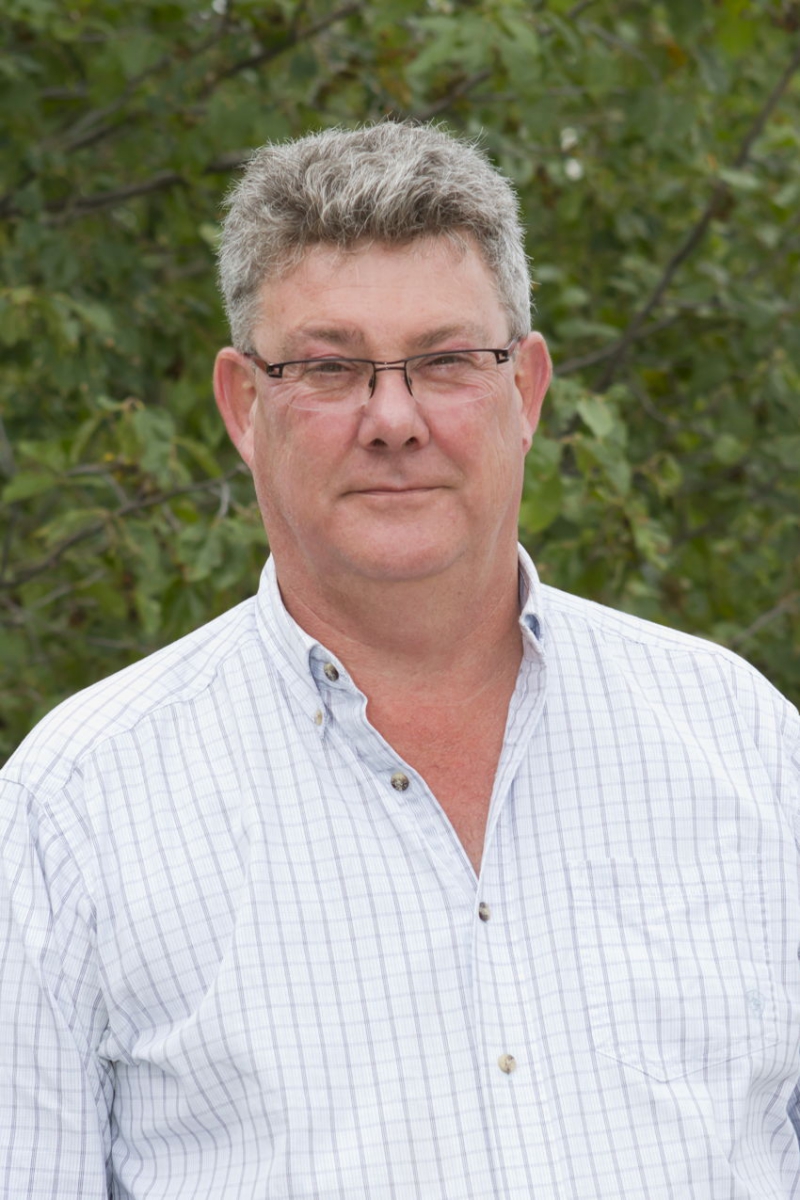
Three long time Board members completed 6-year terms at the end of November and stepped down from the Board. Andrea Lyall, Michael Nash and Dave Patterson each left their distinct mark on the Board. Andrea fostered a deepened sense of awareness of aboriginal interests in forest management in the province. Mike Nash brought the public’s interest to bear on many Board discussions, as well as fostering strong connections with fish, wildlife and outdoor recreation interests across the north. Dave’s knowledge and understanding of the roots of the Forest and Range Practices Act and industry’s market and competitiveness concerns will certainly be difficult to replace.
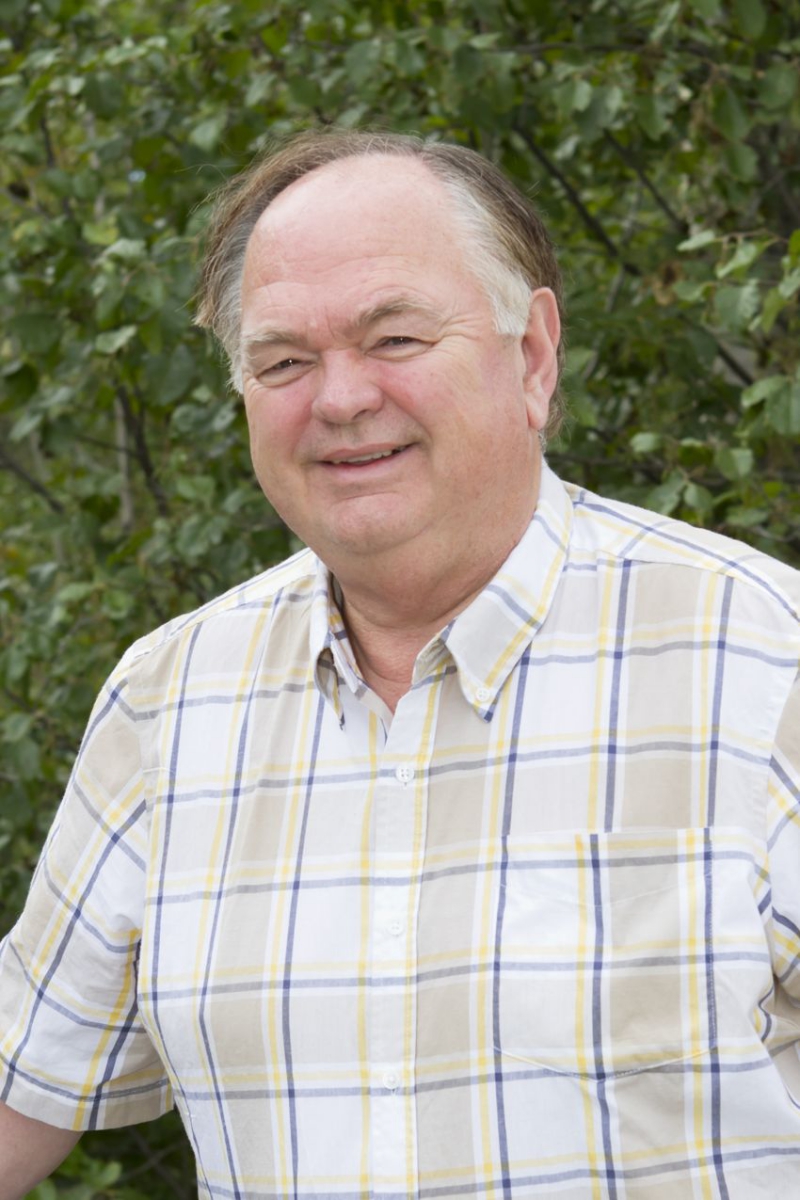 Bill Dumont, RPF, has been reappointed for an additional 2-year term and we are very pleased to have Bill’s continued passion and commitment to forest stewardship at the table. Newly appointed members Marlene Machmer, R.P. Bio, and Angeline Nyce, LLB, RPF, joined the Board as of November 30, 2014, for two-year terms.
Bill Dumont, RPF, has been reappointed for an additional 2-year term and we are very pleased to have Bill’s continued passion and commitment to forest stewardship at the table. Newly appointed members Marlene Machmer, R.P. Bio, and Angeline Nyce, LLB, RPF, joined the Board as of November 30, 2014, for two-year terms.
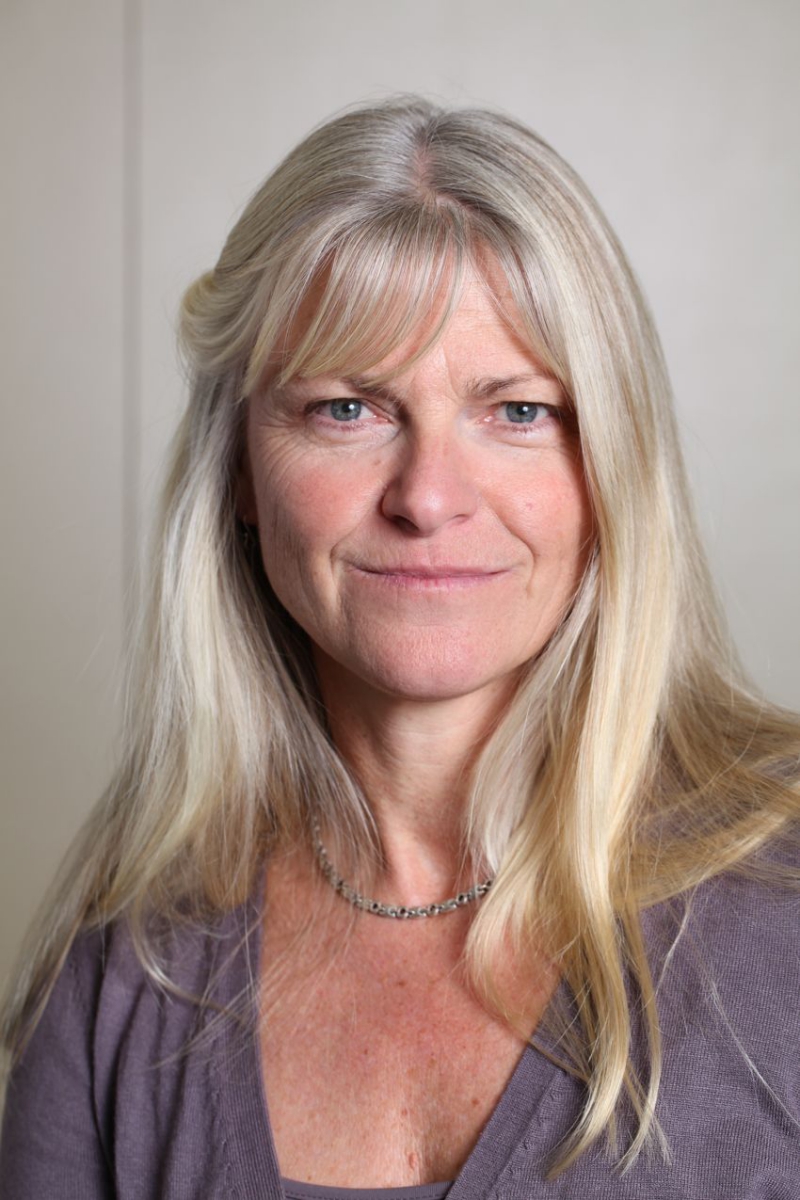 Marlene is a resident of Nelson, where she founded Pandion Ecological Research Ltd. (1990), an environmental consulting firm. Marlene is an ecologist with 25 years broad-based experience in ecosystems, habitats, species at risk, environmental impact assessment, management, inventory, restoration and stewardship in BC.
Marlene is a resident of Nelson, where she founded Pandion Ecological Research Ltd. (1990), an environmental consulting firm. Marlene is an ecologist with 25 years broad-based experience in ecosystems, habitats, species at risk, environmental impact assessment, management, inventory, restoration and stewardship in BC.
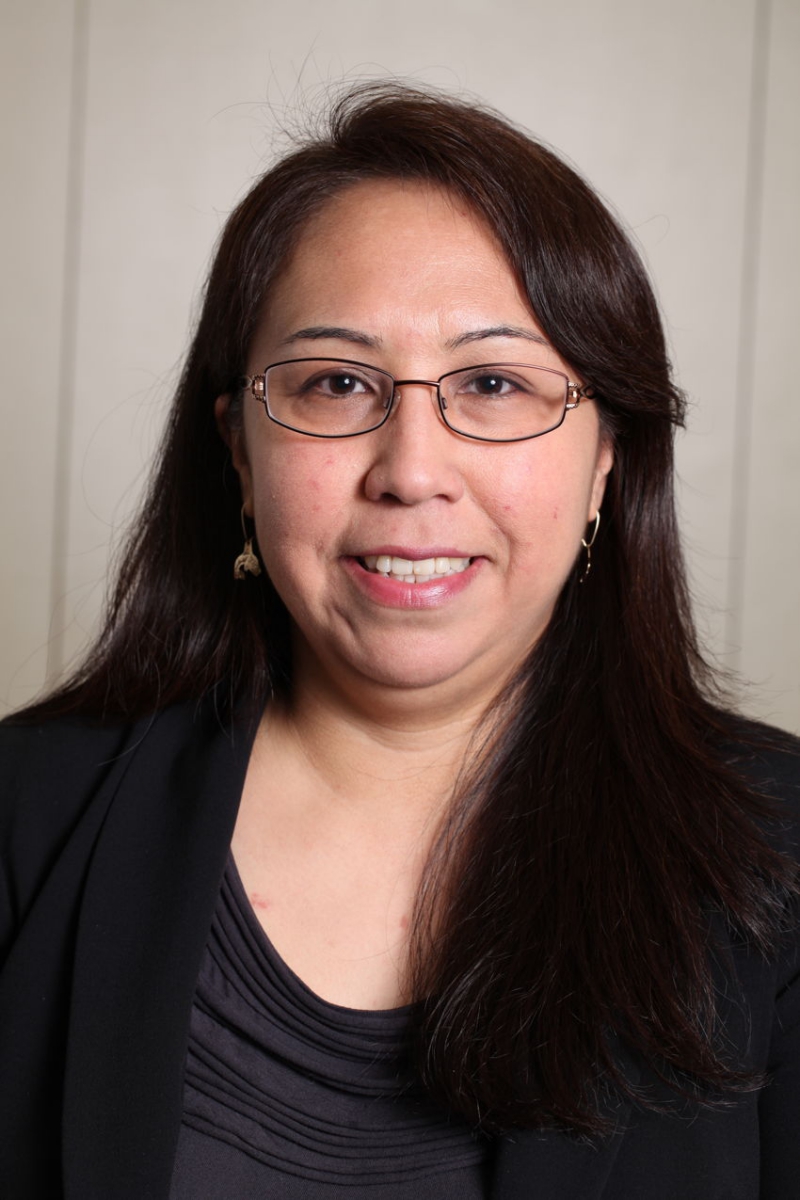 Angeline is a lawyer practicing in the areas of Natural Resources Law and Aboriginal Law and First Nations Legal Issues, with a focus on sustainable resource development, integrated resource management and land use issues. She is also a Registered Professional Forester and has worked in the forestry industry for tenure holders and contractors in the areas of forest resources planning, operations and silviculture.
Angeline is a lawyer practicing in the areas of Natural Resources Law and Aboriginal Law and First Nations Legal Issues, with a focus on sustainable resource development, integrated resource management and land use issues. She is also a Registered Professional Forester and has worked in the forestry industry for tenure holders and contractors in the areas of forest resources planning, operations and silviculture.
2014 in Review - Quick Facts
| New Compliance Audits Started – 12 New Complaint Investigations Started – 5 Public Concerns Addressed – 71 Recommendations Made – 17 Recommendations Acted On* – 15 |
Reports Published – 26 News Releases Issued – 34 Facebook Likes – 164 Twitter Followers – 336 Stakeholder Meetings – 46 (31 different stakeholders) Conferences/Events Attended – 41 Presentations Given – 23 |
*NOTE: Some responses to recommendations are not due until 2015

